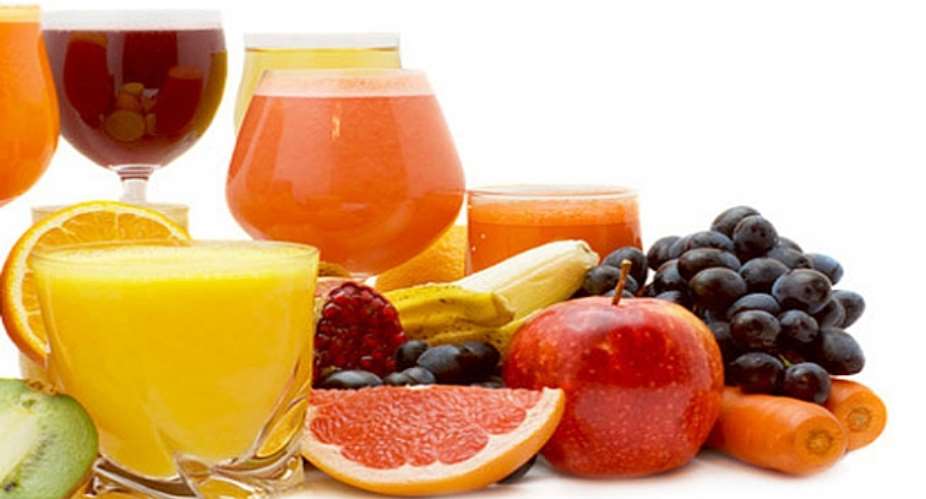By Catherine Northington
6 Foods and Drinks That Make You Hungry Again After Eating Them -Ever get a food craving that you just can't kick? It's an all-too-common problem, and it may be more complex than you think. Research suggests that your food cravings can be at least partially influenced by what you've already been eating or drinking. Consuming certain types of products can influence your bloodstream in ways that ultimately cause your brain to feel more or less hungry.
These six foods and drinks are guaranteed to have you craving more calories — whether you need them or not.
Source: Thinkstock 1. Diet sodas
“If you're consuming beverages without calories and [you're] not getting fullness from sugar-sweetened beverages, you could be priming the brain to want to eat more,” sugar addiction researcher Nicole Avena, Ph.D., tells the Huffington Post. More research is needed to confirm the nature of artificial sweeteners' roles in all this, but various studies have found links between overweight subjects and consumption of diet beverages. For instance, one investigation at the University of Texas found that a group of diet soda drinkers experienced 70% greater increases in waist circumference compared to subjects who did not drink diet soda.
Source: iStock 2. Salty snacks
Potato chips, pretzels, and mixes of salty snacks are well-known enemies to the diet. To begin with, they're delicious — but on top of that, they're empty calories, meaning that you can continue popping them into your mouth for hours before feeling any satisfaction. Dietitian Mitzi Dulan points out to Health that because your taste buds and brain link fast-acting energy with sugary foods, you're almost guaranteed to crave something sweet after those salty indulgences. This is due to a phenomenon called sensory specific satiety — even if you're filled up on salty chips and pretzels, you'll experience cravings to match that satisfaction with sweet snacks.
Source: iStock 3. Juices
Juice diets are a popular way to get the flavors of all your favorite healthy foods, but they can also be lacking in certain vital nutrients. The problem with these drinks is that they retain the sugars of the fruits you drop into the blender or juicer, but they lack the fiber-containing pulp and skin components of the fruit. Drinking a glass of juice can cause a sudden spike in blood sugar levels. Shortly after, these levels will drop back down to balance themselves out — but that sudden drop will lead to feelings of hunger, Dietitian Mitzi Dulan warns in Health. Instead of juicing, try a whole-fruit smoothie incorporating a protein-packed ingredient like a nut butter to balance blood sugar levels and maintain satiety.
Source: iStock 4. White bread
White bread products are made using white flour, which is stripped of its outer shell (the bran), reports Health. This process drastically reduces the grain's fiber content, also leading your body's insulin levels to spike. A recent study of more than 9,000 subjects in Spain found that those who ate two or more servings of white bread a day were 40% likelier to become overweight or obese over a five-year period. Additionally, the American Journal of Clinical Nutrition published findings in 2013 linking stimulated appetites to meals based in refined carbohydrates. To avoid these cravings, try eating whole grain pastas and breads.
Joe Raedle/Getty Images 5. MSG (Chinese food)
Monosodium glutamate (MSG) is a chemical “flavor enhancer” added to products such as Chinese food. The ingredient boosts the flavors in what you're consuming, which automatically makes you crave more. A study at the University of Sussex found that people who ate foods containing MSG were less hungry 30 minutes after eating, but their appetite levels spiked an hour later. Meanwhile, writes Men's Health, the group who had consumed no MSG remained stable.
Source: iStock 6. Frozen dinnners
Well + Good observes that even frozen dinners billing themselves as “healthy” are often lacking in essential nutrients — and the absence of those qualities will leave us craving more soon after we finish. Most frequently, these low-calorie choices will skimp out on vegetables, grains, or fruits, all of which contain nutrients that promote feelings of fullness. If you do find yourself heating up a microwave meal, try heating up some frozen vegetables to enjoy with it. They're low in calories, but rich in the nutrients you need to stay satisfied.
SOURCE:cheatsheet.com





 Former Kotoko Player George Asare elected SRC President at PUG Law Faculty
Former Kotoko Player George Asare elected SRC President at PUG Law Faculty
 2024 elections: Consider ‘dumsor’ when casting your votes; NPP deserves less — P...
2024 elections: Consider ‘dumsor’ when casting your votes; NPP deserves less — P...
 You have no grounds to call Mahama incompetent; you’ve failed — Prof. Marfo blas...
You have no grounds to call Mahama incompetent; you’ve failed — Prof. Marfo blas...
 2024 elections: NPP creates better policies for people like us; we’ll vote for B...
2024 elections: NPP creates better policies for people like us; we’ll vote for B...
 Don’t exchange your life for wealth; a sparkle of fire can be your end — Gender ...
Don’t exchange your life for wealth; a sparkle of fire can be your end — Gender ...
 Ghana’s newly installed Poland train reportedly involved in accident while on a ...
Ghana’s newly installed Poland train reportedly involved in accident while on a ...
 Chieftaincy disputes: Government imposes 4pm to 7am curfew on Sampa township
Chieftaincy disputes: Government imposes 4pm to 7am curfew on Sampa township
 Franklin Cudjoe fumes at unaccountable wasteful executive living large at the ex...
Franklin Cudjoe fumes at unaccountable wasteful executive living large at the ex...
 I'll 'stoop too low' for votes; I'm never moved by your propaganda — Oquaye Jnr ...
I'll 'stoop too low' for votes; I'm never moved by your propaganda — Oquaye Jnr ...
 Kumasi Thermal Plant commissioning: I pray God opens the eyes of leaders who don...
Kumasi Thermal Plant commissioning: I pray God opens the eyes of leaders who don...
